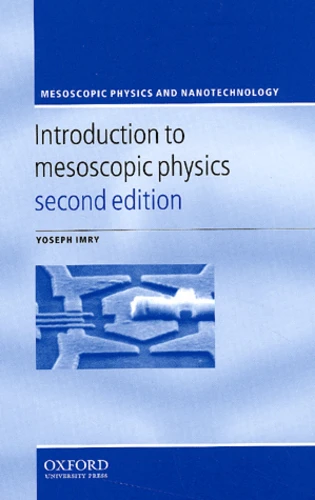Introduction To Mesoscopic Physics. 2nd Edition
Par :Formats :
- Réservation en ligne avec paiement en magasin :
- Indisponible pour réserver et payer en magasin
- Nombre de pages250
- PrésentationRelié
- Poids0.57 kg
- Dimensions16,5 cm × 24,0 cm × 1,7 cm
- ISBN0-19-850738-0
- EAN9780198507383
- Date de parution07/12/2001
- ÉditeurOxford University Press
Résumé
Mesoscopic physics is the physics of structures larger than a nanometer (one billionth of a meter) but smaller than a micrometer (one millionth of a meter). This size range is the stage on which the exciting new research on submicroscopic and electronic and mechanical devices is being done. This research often crosses the boundary between physics and engineering, since engineering such tiny electronic components requires a firm grasp of quantum physics. Future applications of this work could include microscopic robot surgeons that travel through the blood stream to repair clogged arteries, submicroscopic actuators and builders, and supercomputers that fit on the head of a pin. The world of the future is being planned and built by physicists, engineers, and chemists working in the microscopic realm. This book can be used as the main text on a mesoscopic physics course or as a supplementary text in electronic devices, semiconductor devices, and condensed matter physics courses. For this new edition, the author has substantially updated and modified the bibliography and the material on dephasing and noise in mesoscopic systems. A brief discussion of new nanosystems has been added.
Mesoscopic physics is the physics of structures larger than a nanometer (one billionth of a meter) but smaller than a micrometer (one millionth of a meter). This size range is the stage on which the exciting new research on submicroscopic and electronic and mechanical devices is being done. This research often crosses the boundary between physics and engineering, since engineering such tiny electronic components requires a firm grasp of quantum physics. Future applications of this work could include microscopic robot surgeons that travel through the blood stream to repair clogged arteries, submicroscopic actuators and builders, and supercomputers that fit on the head of a pin. The world of the future is being planned and built by physicists, engineers, and chemists working in the microscopic realm. This book can be used as the main text on a mesoscopic physics course or as a supplementary text in electronic devices, semiconductor devices, and condensed matter physics courses. For this new edition, the author has substantially updated and modified the bibliography and the material on dephasing and noise in mesoscopic systems. A brief discussion of new nanosystems has been added.

